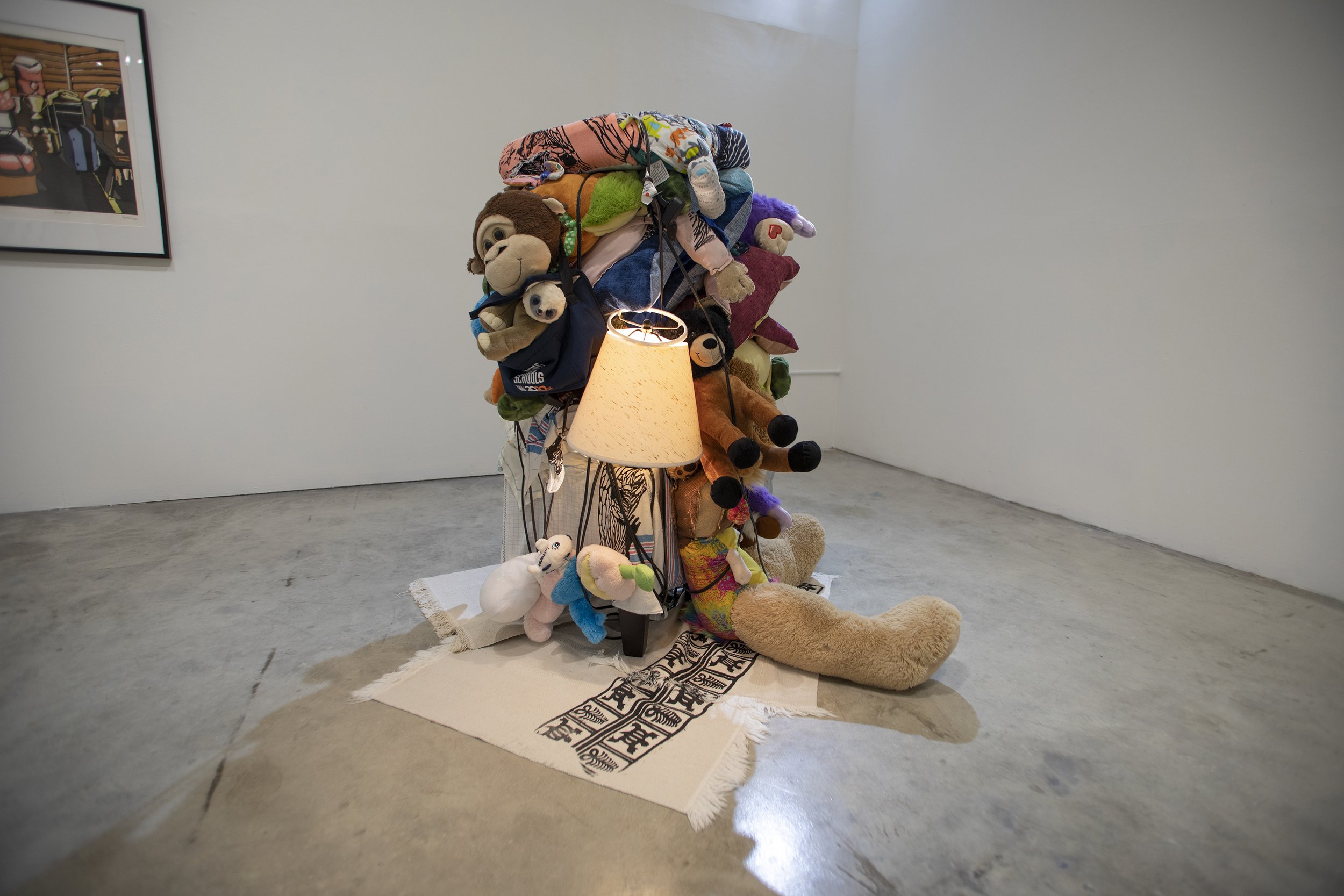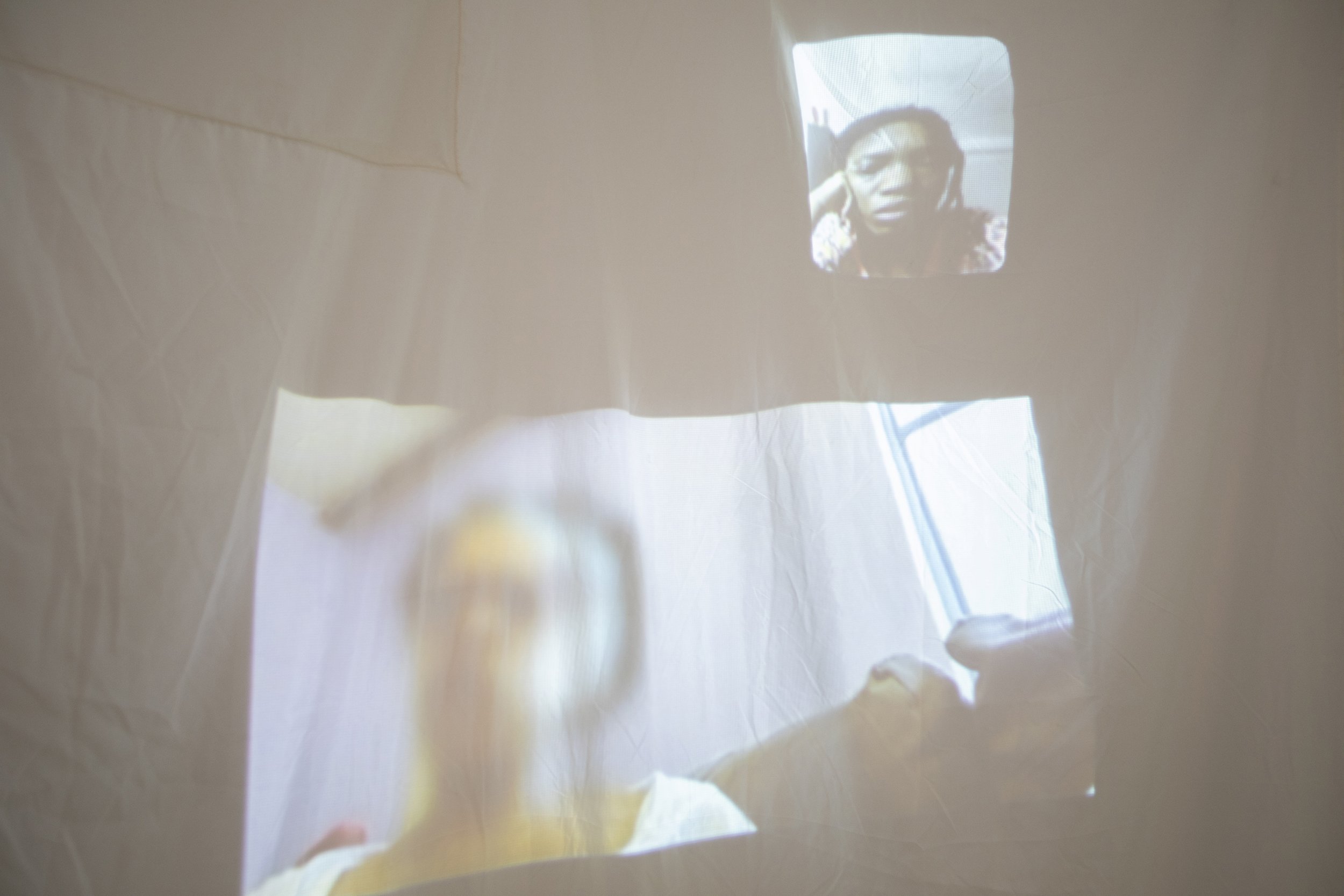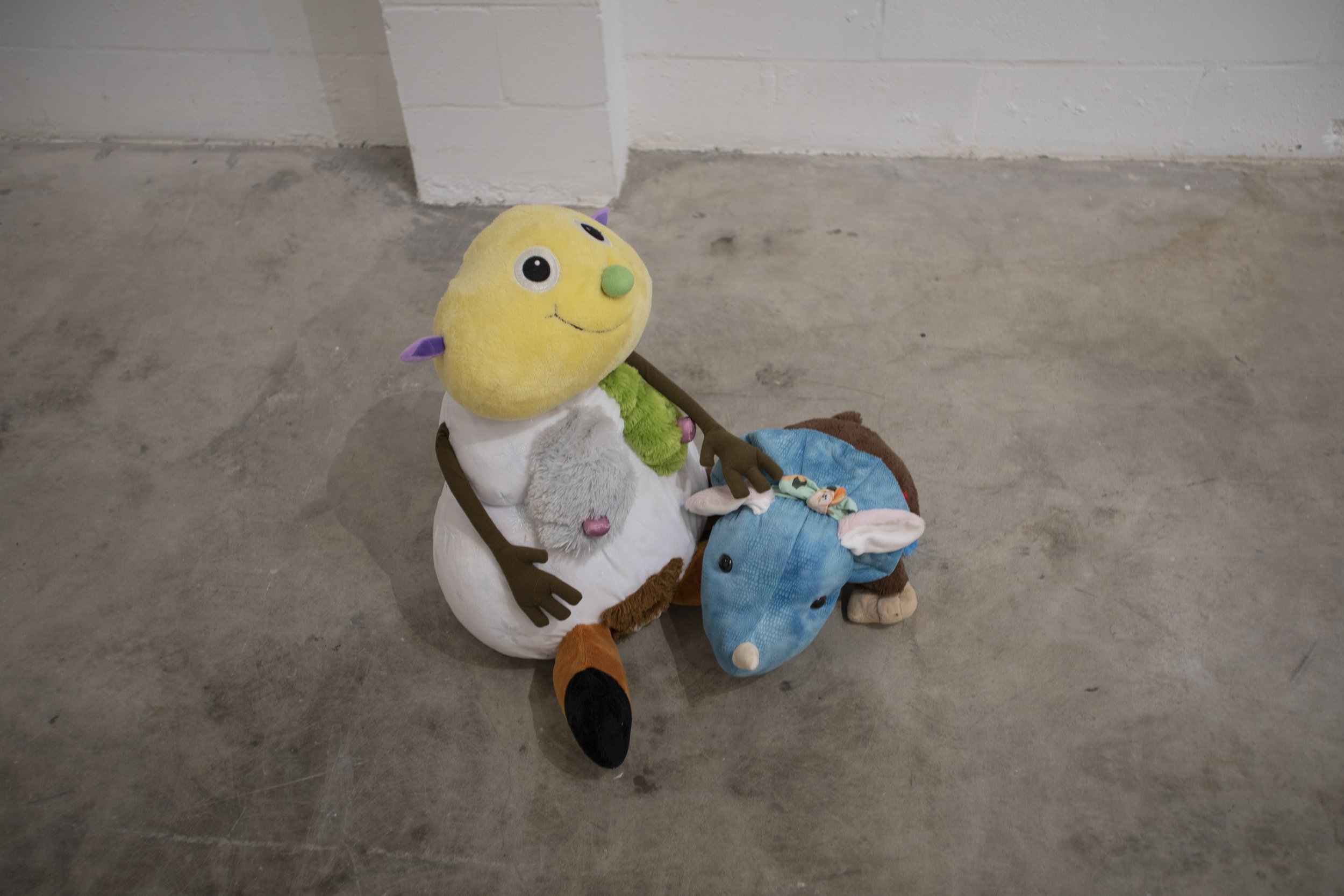Ah Who Run Dis at SPAACES Gallery

Ah Who Run Dis at SPAACES Gallery is an exhibition of collages, sculptures, and video works from Jamaican-American artist, Krystle Lemonias. Scraps of fabric, netting, and diapers are sewn into abstract forms, body parts of stuffed toys are stitched into cuddly hybrids, and videos of private conversations are projected upon bedsheets. Lemonias gives intimate attention and nuanced consideration to themes of domestic work, family dynamics, and the immigrant experience.
The title of the exhibition is a Patois phrase about power dynamics that’s commonly used in Jamaica. Lemonias says, “I think about the interaction between people, and the concept of power struggles, and who has the power. ‘Ah who run dis’ is something that, for example, your mother would say if she gets mad at you. She’ll say this to remind you where you stand. ‘Ah who run dis?’ It’s a question and a statement at the same time.”
Upon entering the gallery’s front room, a grouping of three projected videos titled, Carry yuh ackee go a Linsted market not a quaki would sell (2022), is presented as a conversation between memories. The videos are projected onto flowery-patterned bed sheets that hang from the ceiling like vertical banners. One video shows a Facetime conversation with the artist in the upper right-hand corner. The other participant in the FaceTime is blurred out, but we can hear both ends of their conversation. Another video shows a woman performing the Jamaican folk song, Linstead Market. The third video is of a suburban landscape where the pictured person attempts to ride a bike for the first time. The audio tracks from the three videos overlap in a way that reminds of a small house party or family reunion where no conversation takes precedence.

The video projections are installed in a ring overlooking two sculptures that stand just above floor-level. One consists of the head of a stuffed Pikachu with the arms and legs of a teddy bear sewn to it, and the other is a plush horse with antennae and various mis-matched appendages. The campfire way that the videos surround the stuffed toys comes off as a seance to one’s own lost childhood, or an adult revision of a naïve perspective.

The gallery’s main room includes plush sculptural works, fabric collages, and a quilted portrait. A totemic sculpture made from clustered stuffed toys titled, Bag an Pan (2022), greets viewers as they enter the room. It stands just below eye-level and includes an illuminated table lamp intertwined within the multicolored faux fur. Areas on the top and bottom of the sculpture have woodblock printed Adinkra symbols in black paint. Traditionally, Adinkra symbols are printed on fabric, and are used in Ghana as means to communicate in a multilingual environment. The Adinkra symbols refer to the artist’s Jamaican heritage that extends to the enslaved peoples of west Africa who were brought to the Caribbean islands by the Europeans. They serve as an allegory for how the artist’s work provides a common ground between the Anglo-American experience and that of cultures who’ve suffered the lasting effects of colonialism. “For me, using the Adinkra symbols invites the people that look like me who don’t understand art. They’ll look at it and find something that they know what it is. It will start to create a context for them that will make them want to engage more,” Lemonias says.
On the walls are framed collages made from various fabrics, plastic, and paper. They’re affixed using a sewing machine and look like a fiber-based interpretation of New-York-style abstract painting. Brightly colored and flowery patterned scraps of baby clothes comprise most of their compositions. Some contain a loosely gauged netting that resembles packaging for fruits. Others have slivers of paper, and even diapers sewn into them.
The scraps of fabric used in the abstract collages are the remaining pieces from the artist’s series of quilted scenes depicting nannies. One such piece titled, America sun just different ehh (2022), hangs loosely on the wall like a flag. A nanny is depicted on the left-hand side of the composition, and the child for whom she cares sits next to her. Most of the composition is monochromatic, but the child appears in polychrome. The contrast of color helps to emphasize the stereotype of the mammy, and how Caribbean women are often relegated to care work in the United States for white, upper-class families. Lemonias tells of her experience as a nanny by saying, “So much of how you are treated on the job is about the parameters that the care worker creates. In many of these care worker positions, that care worker runs that house. However, the person who pays the bills is thought of to run that house—ah who run dis?”

A plush sculpture titled, Hush, nuh mine (2022), sits upright with a large head and smiling face, slim, flimsy arms, and awkwardly bulging breasts. Beside it is a shorter plush sculpture with the head of a triceratops and the body of a teddy bear. Nestled alongside one another, the pair appears as a mother and child. “The title refers to when someone apologizes for something but it’s not comforting. ‘Hush, nuh mine’ is a Patois phrase that Jamaicans say when you intend to soothe the person, but it’s also a dismissal. It’s like you’re doing the thing that’s supposed to make you feel better, but there’s a lack of something behind it,” says Lemonias.

“It’s rooted in the foundation of my culture, but I’m also using symbolism, iconography, and allegories that are situated in a way that the Western world understands so my culture doesn’t get lost. I’m a hybrid, at this point, being in this country for twenty years. I’ve lived in America longer than I have lived in Jamaica. I am fusing my experience and showing that fusion in the work.”
